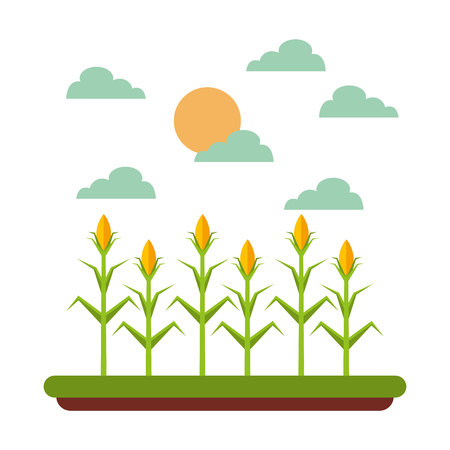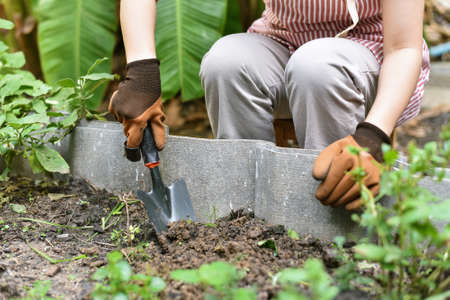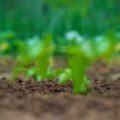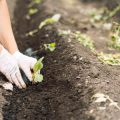1. Planning Your Spring Garden
Before you start digging or planting, its important to lay a solid foundation by planning your spring garden thoughtfully. This step helps ensure that your garden will thrive and that your efforts will pay off with healthy plants and beautiful blooms.
Choose the Right Location
The first thing you’ll want to consider is where to place your garden. Most vegetables and flowers need at least 6–8 hours of sunlight a day, so pick a spot that gets plenty of sun. Also think about convenience—placing your garden near a water source and where it’s easy to access will make maintenance much simpler.
Key Factors for Choosing a Garden Spot
| Factor | Why It Matters |
|---|---|
| Sunlight | Most plants need full sun to grow strong and produce well. |
| Soil Drainage | Avoid areas where water pools after rain; good drainage prevents root rot. |
| Proximity to Water | Makes watering easier, especially during dry spells. |
| Protection from Wind | Sheltered spots can prevent damage to delicate plants. |
| Accessibility | You’re more likely to tend your garden if it’s easy to reach. |
Understand Your USDA Hardiness Zone
The United States is divided into USDA hardiness zones based on average annual minimum winter temperatures. Knowing your zone helps you choose plants that are most likely to thrive in your area. You can find your zone by entering your ZIP code on the USDA Plant Hardiness Zone Map.
Examples of USDA Zones Across the U.S.
| Region | Typical USDA Zone | Common Plants That Thrive There |
|---|---|---|
| Northeast (e.g., New York) | 5-7 | Lettuce, kale, peonies, tulips |
| Southeast (e.g., Florida) | 8-11 | Citrus trees, tomatoes, hibiscus, peppers |
| Midwest (e.g., Illinois) | 4-6 | Corn, beans, hostas, lilacs |
| Southwest (e.g., Arizona) | 7-10 | Cacti, succulents, herbs, eggplants |
| West Coast (e.g., California) | 6-10 | Zinnias, grapes, artichokes, lavender |
Set Gardening Goals Based on Space and Climate
Your available space and local climate conditions play a big role in what type of garden you can create. Think about whether youre working with containers on a balcony or have room for raised beds in a backyard. Also decide what you want from your garden—fresh veggies, colorful flowers, or a mix of both?
Tips for Setting Realistic Gardening Goals:
- Start Small: If youre new to gardening, begin with a few easy-to-grow plants like tomatoes or marigolds.
- Think About Time Commitment: Choose low-maintenance plants if you don’t have much time for upkeep.
- Plan Around Your Lifestyle: Grow herbs near the kitchen if you cook often; plant drought-tolerant species if you travel frequently.
A little planning now will go a long way toward creating a successful spring garden that brings joy all season long.
2. Choosing the Right Plants
Before you start digging in the dirt, its important to choose the right plants for your spring garden. Picking the right mix of vegetables, herbs, and flowers that grow well in your local climate will give you a better chance at a successful and enjoyable gardening season.
Know Your USDA Hardiness Zone
The first step is to find out which USDA Plant Hardiness Zone you live in. This map helps determine what plants are most likely to thrive in your area based on average annual minimum winter temperatures. You can look up your zone on the USDA website by entering your ZIP code.
Popular Spring Vegetables by Region
Here’s a quick look at common spring vegetables that grow well in different parts of the U.S.
| Region | Recommended Vegetables |
|---|---|
| Northeast & Midwest | Lettuce, spinach, peas, radishes, carrots |
| Southeast | Tomatoes, peppers, okra, cucumbers, squash |
| Southwest | Chard, kale, beets, bush beans, eggplant |
| Pacific Northwest | Broccoli, cauliflower, lettuce, onions, potatoes |
Herbs That Thrive in Spring
If youre adding herbs to your garden (and why not?), spring is a great time to plant:
- Basil (best started indoors or from starter plants)
- Cilantro (grows quickly from seed)
- Dill (easy to grow directly from seed)
- Parsley (slower to germinate but hardy)
Colorful Spring Flowers to Consider
Add some charm and attract pollinators with spring-blooming flowers like:
- Pansies
- Snapdragons
- Alyssum
- Petunias
These flowers do well in cooler spring temps and can often be planted before the last frost date.
Seeds vs. Starter Plants: Which Should You Choose?
| Option | Pros | Cons |
|---|---|---|
| Seeds | Less expensive, wide variety available, satisfying to grow from scratch | Takes longer to mature, requires more attention early on |
| Starter Plants (Transplants) | Easier for beginners, faster harvests, skips germination stage | More costly per plant, limited varieties at local stores |
If youre new to gardening or have a short growing season, starter plants might be a good way to get going quickly. For those who enjoy the full experience and want more variety, starting from seed is a rewarding option.

3. Preparing the Soil
Before you start planting your spring garden, its important to make sure your soil is healthy and ready to support plant growth. Good soil is the foundation for a successful garden, and taking the time to prepare it properly can make a big difference in how well your plants grow.
Check Your Soil Type
Start by figuring out what kind of soil you have in your yard. Most soil falls into one of these main types:
| Soil Type | Characteristics | Common Issues |
|---|---|---|
| Sandy | Drains quickly, feels gritty | Doesnt hold nutrients well |
| Clay | Sticky when wet, hard when dry | Poor drainage, can be compacted |
| Loamy | Balanced mix of sand, silt, and clay | Ideal for most plants |
You can test your soil texture by grabbing a handful of moist soil and squeezing it. Sandy soil falls apart easily, clay sticks together tightly, and loamy soil holds its shape but crumbles easily.
Add Organic Matter or Compost
No matter what type of soil you have, adding organic matter like compost can improve its structure and fertility. Organic matter helps sandy soil hold moisture and nutrients better, while also loosening up heavy clay soils so water drains more easily.
How to Add Compost:
- Spread 2–3 inches of compost over your garden bed.
- Use a shovel or garden fork to mix it into the top 6–8 inches of soil.
- If youre working with raised beds, fill them with a mix of compost and topsoil (about 50/50).
Test Your Soil’s pH Level
The pH level tells you how acidic or alkaline your soil is. Most vegetables and flowers prefer a slightly acidic to neutral pH (between 6.0 and 7.0). You can buy an easy-to-use soil test kit at any garden center or online.
What Your pH Test Means:
| pH Range | Description | Action Needed |
|---|---|---|
| Below 6.0 | Acidic | Add lime to raise pH |
| 6.0–7.0 | Neutral (Ideal) | No changes needed for most plants |
| Above 7.0 | Alkaline | Add sulfur or organic matter to lower pH |
Improve Soil Structure Over Time
If your soil is compacted or has poor drainage, work on improving it each season by continuing to add compost, planting cover crops during fall or winter, and avoiding walking on garden beds when they’re wet.
A Few Extra Tips:
- Avoid using chemical fertilizers early on—they can harm beneficial microbes in your soil.
- If youre short on compost, leaf mold or well-rotted manure are great alternatives.
- A mulch layer after planting will help retain moisture and suppress weeds.
Taking these steps now will help create rich, balanced soil that gives your spring garden the best possible start.
4. Planting Your Garden
Now that your garden bed is prepped and your plan is in place, it’s time to start planting. Whether you’re sowing seeds directly into the soil or transplanting young seedlings, following proper guidelines will help ensure a successful spring garden.
Sowing Seeds vs. Transplanting Seedlings
Some plants grow best when started from seeds right in the ground, while others benefit from being started indoors and then transplanted. Heres a quick guide:
| Plant Type | Sow Directly | Transplant Seedlings |
|---|---|---|
| Lettuce | ✔️ | |
| Carrots | ✔️ | |
| Tomatoes | ✔️ | |
| Peppers | ✔️ | |
| Cucumbers | ✔️ (in warm soil) | ✔️ (if started early indoors) |
Spacing Your Plants Properly
Crowding your plants can lead to poor air circulation, more pests, and limited growth. Always check seed packets or plant tags for spacing recommendations. Here are some general guidelines:
| Vegetable | Recommended Spacing (inches) |
|---|---|
| Lettuce | 6–12 inches apart |
| Tomatoes | 18–24 inches apart |
| Carrots | 2–4 inches apart (thin after sprouting) |
| Zucchini | 24–36 inches apart |
| Basil | 10–12 inches apart |
Organizing Your Garden Layout
A smart layout helps with sunlight exposure, airflow, and ease of maintenance. Here are a few tips to organize your garden space effectively:
Select the Right Spots for Each Plant
- Taller plants like tomatoes or corn should go on the north or west side so they don’t shade shorter crops.
- Creeping plants like cucumbers or squash can be trained to climb trellises to save space.
Create Accessible Paths
If your garden is large enough, leave narrow walking paths between rows or beds to avoid stepping on soil where plants are growing. This keeps the soil loose and roots healthy.
A Quick Tip:
If youre using raised beds or containers, rotate crops each year to prevent nutrient depletion and reduce disease risks.
A little planning goes a long way when it comes to planting. Follow these simple steps, pay attention to each plant’s needs, and you’ll set yourself up for a thriving spring garden!
5. Watering and Maintenance
Once your spring garden is planted, keeping it healthy and thriving comes down to consistent care. Watering, weeding, mulching, and controlling pests are all key parts of maintaining a successful garden during the spring months.
Watering Routines
Spring weather can be unpredictable, with occasional rains and fluctuating temperatures. A good watering schedule helps prevent both under- and over-watering. Here’s a simple guideline:
| Plant Type | Watering Frequency | Best Time to Water |
|---|---|---|
| Vegetables | 2–3 times per week | Early morning |
| Herbs | 1–2 times per week | Morning or late afternoon |
| Flowers | 2–3 times per week | Morning |
Always check soil moisture before watering. Stick your finger about an inch into the soil—if it feels dry, it’s time to water.
Weeding Tips
Weeds compete with your plants for nutrients, water, and sunlight. Keeping them in check is important for a healthy garden. Try these tips:
- Pull weeds early in the morning when the ground is damp—it makes removal easier.
- Use a hoe or hand tool to remove weeds from the root.
- Avoid letting weeds flower and go to seed to prevent spreading.
Mulching Methods
Mulch helps retain moisture, suppress weeds, and regulate soil temperature. Here are some common types of mulch you can use in spring:
| Mulch Type | Benefits | Best Use For |
|---|---|---|
| Straw or Hay | Keeps soil moist and adds organic matter as it breaks down | Vegetable gardens |
| Bark or Wood Chips | Long-lasting and decorative; suppresses weeds well | Flower beds and around shrubs |
| Compost | Adds nutrients while acting as mulch | All-purpose use across garden beds |
Organic Pest Control
Pests can quickly damage young spring plants. Using natural methods protects your garden without harming pollinators or beneficial insects:
- Diatomaceous Earth: Sprinkle around plant bases to deter slugs and soft-bodied insects.
- Neem Oil Spray: Effective against aphids, mites, and whiteflies—apply early in the morning or evening.
- Companion Planting: Grow pest-repellent plants like marigolds or basil near vegetables to keep bugs away naturally.
- Hand-Picking: Check leaves regularly and remove harmful bugs by hand if possible.
Caring for your garden consistently throughout spring ensures strong growth and a bountiful harvest later in the season. Stay observant, adjust your routines based on weather conditions, and enjoy watching your garden flourish!
6. Harvesting and Enjoying Your Garden
After weeks of planning, planting, and caring for your spring garden, it’s finally time to enjoy the fruits (and veggies!) of your labor. Knowing when and how to harvest your crops ensures the best flavor and encourages continued growth.
When to Harvest Spring Vegetables
Each crop has its own signs of readiness. Here are some common spring vegetables and their ideal harvest times:
| Vegetable | Harvest Time | Signs Its Ready |
|---|---|---|
| Lettuce | 30–60 days after planting | Leaves are full-sized but still tender |
| Spinach | 35–45 days | Leaves reach 3–4 inches long |
| Radishes | 20–30 days | Shoulders of roots visible above soil, firm texture |
| Peas | 50–70 days | Pods are plump but not overripe; seeds inside still tender |
| Carrots | 60–80 days | Tops of carrots slightly visible at soil line, rich orange color |
How to Harvest Properly
Use clean scissors or garden shears to snip leafy greens like lettuce and spinach about an inch above the base. For root vegetables like radishes and carrots, gently loosen the soil with a hand trowel before pulling them up to avoid breakage.
Pro Tip:
If you’re harvesting leafy greens, pick just a few outer leaves at a time. This allows the plant to keep producing through the season.
Ways to Use Fresh Produce from Your Garden
Your homegrown produce can be the star of many delicious meals. Here are some easy ideas:
- Lettuce & Spinach: Toss into fresh salads or add to sandwiches and wraps.
- Radishes: Slice thin for a crunchy topping on tacos or toast; roast for a mellow flavor.
- Peas: Add to stir-fries, pasta dishes, or simply sauté with garlic and butter.
- Carrots: Enjoy raw as snacks, grate into slaws, or roast with olive oil and herbs.
Tips for Preserving Your Garden’s Bounty
If you have more produce than you can eat right away, consider these preservation methods:
| Preservation Method | Best For | Description |
|---|---|---|
| Freezing | Peas, spinach, carrots (blanched) | Keeps veggies fresh for months; blanch before freezing to preserve texture and color. |
| Pickling | Radishes, carrots | Adds flavor and extends shelf life; great for quick refrigerator pickles. |
| Dried Herbs | Basil, parsley, mint (if planted) | Dried herbs can be stored in airtight jars for use year-round. |
A Little Extra Joy:
Your spring garden isn’t just about food—it’s about the joy of growing something yourself. Share your extra produce with neighbors or bring a small bundle to a friend. It’s a simple way to spread happiness and connect with your community.
The work you’ve put into your garden pays off when you sit down to enjoy a meal made from ingredients you grew yourself. Happy harvesting!


